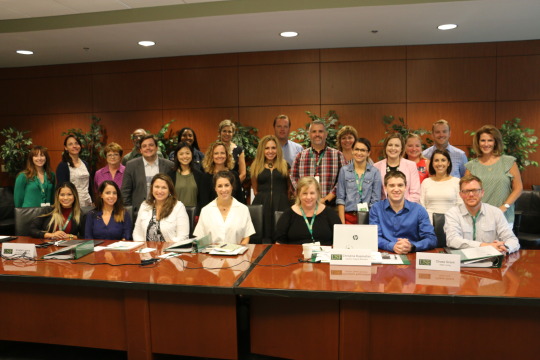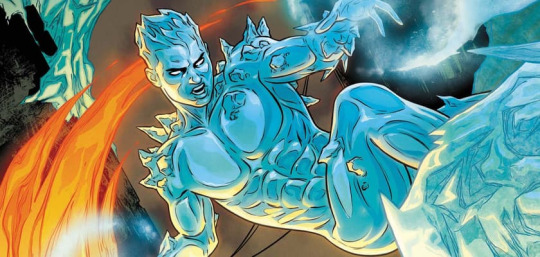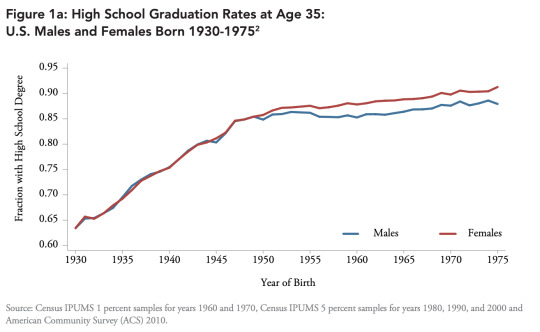#executive consulting Florida
Text

Leadership & Executive Coaching
#Jackie Kindall#Transformational Coaching & Consulting in Florida#DEI Consulting in Florida#Transformational Coaching & Consulting florida#Best management#executive consulting in Florida#Diversity#Equity#& Inclusion Consulting in Florida#DEI consulting firms in Florida#executive consulting Florida#Learning & Development Programs in Florida#Learning & Development Programs Florida#Transformational Consulting in Florida#Best executive consulting in Florida#Leadership & Executive Coaching in florida#leadership coaching in florida#organization consulting training in florida#Executive Coaching in Florida#organization consulting in florida#Organization consulting in Florida#consulting training in florida
0 notes
Text

Brandon Ubiera Orlando, Florida
Brandon Ubiera, CEO of Alpha Timeshare Consultants, is known for aiding people in exiting timeshare contracts. His Bronx upbringing cultivated strength and compassion, evident in his successful leadership and community involvement in Florida.
#Chief Executive Officer at Alpha timeshare consultants#Business Leader#Brandon Ubiera#Orlando#florida
1 note
·
View note
Text
Zschool - An Educational Consulting
Zschool embodies the future of executive education. Its systematic approach—rooted in strong partnerships with leading universities, vast corporate networks, and an inherent financial responsibility—ensures an unparalleled learning experience. Founded in 2015 by Jordan Zimmerman, the company’s programs are designed with targeted outcomes, helping students complete their courses with a vision and goals for the future.

1 note
·
View note
Text
Thinking way too hard about the queer possibilities of X-Men ‘97
When X-Men ‘97 was first announced, I’ll admit I was kind of ambivelent to the entire project... It felt very nostalgia-focused and was just less interesting to me then an all-new X-Men cartoon that could do its own thing without being burdened with established canon...
...and then I listened to the X-Men 60 Uncanny Years event earlier this year and hearing the executive producer of the series discuss what the X-Men meant to him as a kid as a gay black man in Florida basically changed my mind about the entire project. Now I’m excited for it!
The X-Men are so fucking queer. Even ignoring the ways that the mutant metaphor have been used to discuss queer issues before queer issues could be discussed textually, Marvel’s merry mutants just have... so many queer members and even more when you expand the list to include sub-textual and intended queerness.
So, with all that in mind, I did a little thinking and decided to take some guesses about who could make for queer representation in '97... Let’s dive in!
Part One: The Comic Canon Gays
Let’s start with the characters who are explicitly no-subtext-required queer in the comic books themselves. These are a few of the characters Marvel uses in Pride events and generally parades around every June.
Northstar

Jean-Paul Beaubier may seem like the vanilla ice cream of this rainbow sundae, but there’s far more going on with this character then the “Marvel’s first explicitly gay superhero” title that he is so often boiled down to. A French-Canadian superstar athlete, he’s lived never being entirely sure if his skiing career success was a result of his talent or his mutant abilities.
While his depiction in X-Men The Animated Series just had him be painfully French-Canadian with an on-the-nose accent and French exclamations, there’s a mean catty gay under the surface that is just waiting to be unleashed. They could also adapt his famous wedding arc, wherein he married his husband Kyle Jinadu...

Also he hates cops, so y’know... Maybe Marvel did nail the queer experience on their first try?
Iceman

Bobby Drake is arguably the most famous queer character at Marvel. A member of the original five X-Men, he was famously confirmed as gay when his teenage self was transported to the present and, with some unsolicited help from a teenage Jean Grey, questioned why his older self remaining closeted, even in a world that was (comparatively at least) accepting of queer desire.
In the original show, he showed unrequited interest in Polaris, as he had in the comics before his coming-out. This reboot could potentially give a more grounded and less fantastical take on coming-out then what he had in the comics... or maybe time travel will be involved again - who knows really!
Prodigy

David Allyene, aka Prodigy, is one of the most notable bi men at Marvel with one of the most distinctive coming-out stories. His mutant powers cause him to instantly learn things that other people know, hence the name Prodigy, and, through his powers, he also learned his own sexuality. How’s that for a crazy journey of self-discovery.
Prodigy is a newer character who did not appear in the original animated series at all, so there’s no continuity concerns there...
Mystique and Destiny

Destiny, also known as Irene Adler, met her lover Mystique when he was presenting as male and operating as a consulting detective in Victorian London.
Yeah uh. This is implying what you think it is.
The two of them have been lovers for centuries now, though both took other partners at different points during their relationship. Their love is something special though and together they raised Rogue as a child - as well as maybe sired Nightcrawler together? That was once intended to be Nightcrawler’s origin, but it was famously scrapped due to Marvel editorial not wanting to depict a child that is a product of a queer relationship at the time... but now this November a new comic will explore the “true” origin of Nightcrawler, so maybe Mystique/Destiny having a biological child is back on the table!
Mystique was, of course, in the original series. I’m not sure the actual odds of her relationship with Irene being acknowledged in ‘97 - partially just because I imagine Marvel would be concerned about backlash to queer villains... but also they’re adorable and good to me so I’d like them!
Captain Britain and Askani

Betsy Braddock and Rachel Summers are two incredibly complicated characters to summarize. Rachel is the time-displaced daughter of Scott and Jean from a hypothetical alternate feature, while Betsy Braddock spent like 30 years of her publication history trapped in the body of Kwannon, a Japanese assassin. While these two characters are some of Marvel’s most actively in-your-face unquestionably queer characters - the last Betsy story had a surprising amount of implied sex for only five issues - they’ve never really had a chance to shine in a multimedia way (well, at least not with Betsy in her own body and not being merged with Kwannon).
In the original show, Rachel cameoed briefly as a prisoner of Apocalypse while Pyslocke appeared without being named - assumedly they didn’t want to bother explaining the body-swap storyline. Personally, if they were to be in the show, I’d suggest that Betsy should be introduced as having inherited her brother’s title of Captain Britain, with Pyslocke of the original show being revealed to have been Kwannon in her own body all along...
Part Two: The New Mutants
There’s so many queer New Mutants that I’m just giving them their own category here... plus, with Sunspot being in the main cast, I wouldn’t be surprised if the rest of the time got (Sun)spotlighted as well!
Note that the sapphics of the first generation of New Mutants can also be mixed and matched when it comes to shipping. I present them based on the pairings that are currently canon/teased in the present comics, but Dani/Xuan, Xuan/Kitty, Kitty/Rahcel, etc. are all valid too and could be within the cards for the show.
Karma & Galura

The first explicit lesbian of the X-Men line, Xuân Cao Mạnh is a refugee of the Vietnam Boat Crisis, a thing which makes no sense when you consider that she is still canonically like 20-something years old in 2023. Her coming-out was a much lower-key affair then Jean-Paul’s, with her friends just casually running into her at the Exploding Person festival (i.e., Burning Man) with a shaved pink haircut and already travelling with her two “girlfriends”.
After the musical festival, she proceeded to fall in love with her roommate Kitty Pryde and then her co-worker Dani Moonstar, both of which were never (textually) requited. Recently, she’s started dating the winged mutant Galura and finally gotten to do stuff like “kiss a woman on-panel regularly” after two decades of being a lesbian denied a girlfriend...
She has cameoed in X-Men ‘92-related media with a design that is truly terrible IMO, but I think she could be rebooted and appear in this series in her full glory... especially after the New Mutants movie left her out entirely!
Mirage and Wolfsbane

Introduced in the original New Mutants run, Dani Moonstar and Rahne Sinclair share a unique telepathic connection, helpfully described as them being “soul-mates.” The Comic Book Code prohibited depictions of queer people, but uh. This first run is incredibly not subtle, even as Rahne nominally has interest her male teammate Cannonball.
Unfortunately, post-Claremont, their relationship was more or less abandoned for a few decades (coinciding with a massive downward spiral in Rahne content in general) climaxing with Rahne being killed off entirely in an allegory for transphobic violence... Thankfully, she recovered from her death and has recently been written by a non-binary author and now a trans author, both of whom have leaned back into the idea that these “soul-mates” may, in fact, have romantic feelings for each other.
Oh, also they were explicitly gay in the movie. So. Good for them for that!
Magik and Shadowkat

Another classic pair of X-Men “roommates,” Illyana Rasputina and Kate Pryde are another Claremont-created “soul-mate” duo - albeit without the telepathic bond. After decades of queer-coding, both were able to do queer-adjacent things explicitly for the first time in the Krakoa era, with Illyana asking a group of people of various gender presentations to make out with her and Kate kissing a tattoo artist who looks suspiciously like her bestie on-panel.
Pryde famously lost the spot of “Teen X-Men PoV character” to Jubilee in the show, but maybe X-Men ‘97 could give her a second chance... plus Illyana is one of the most popular X-Men characters not given a full spotlight in the original show, in spite of her more or less being an A-list X-Men in 2023. I don’t know if Marvel is brave enough to make this one canon, but I do think these two are two of the most obviously missing characters from the ‘97 line-up.
Escapade

Shela Sexton, aka Escapade, is a transgender sapphic who debuted in Marvel Pride last year and has since then had a starring role in the most recent New Mutants series. She has the incredibly unique power of the ability to “steal” things from people - including everything from stealing physical objects like their wallet to stealing abstract concepts like their emotional or physical state. Her character also generally has embodied the intersectional approach to mutant identity which has become more and more prevalent in the modern era - her mutant identity and trans identity are both important to her character, but neither are allegories for the other.
I think she’s probably too new to be added to the X-Men ‘97 cast pragmatically, but maybe they could have snuck in a cameo at the last minute? Idk. I figured I’d include her on the list.
Part Three: Let’s Get Wild!
Okay. Fuck it. Let’s talk about some comic book justifications that could be used to queer up the actual main cast from the original classic X-Men The Animated Series.
Jubilee

Jubilation Lee, the teen PoV lead of the X-Men, has been written as queer a handful of times, but never explicitly in 616. Most notably, she was gay in an AU Runaways story (written by N.D. Stevenson), where she dated a bisexual version of Pixie as well as an ice-powered sapphic named Frostbite. Monet also had a crush on her in the X-Men ‘92 animation-inspired comic book series. In terms of 616 content, her relationship with Laura Kinney has often been read in a sapphic way, especially in Liu’s X-23 series where Laura notably breaks up with her boyfriend only for Jubilee to be waiting back at her apartment to go out with her.
Storm

Ororo Munroe, aka Storm, famously has had a subtextual Sapphic fling with the bundle of chaos that is Yukio. They two met for the first time when Ororo went to Japan and their time together was almost immediately followed by her famous punk Storm era, which is very queer when you consider that context. Yukio was also later made explicitly queer in Fox’s Deadpool 2 movie, though the movie character doesn’t share much of the personality and thrill-seeking antics of her comic book counterpart...
Storm is the central protagonist of the original Claremont Uncanny X-Men and will be central to the ‘97 series as well. It’d be really bold to confirm her as queer, but I’d say this is the kind of move that would be worth it if they want this to stand out among X-Men adaptations.
Wolverine, Phoenix, and Cyclops

Finally, Jean Grey, Scott Summers, and Logan were implied to have been in a poly relationship throughout most of the Krakoa era - though they have fallen on hard times recently in the run-up to Fall of X.
I’ll be blunt: I don’t think there’s a chance in hell that Marvel corporate would approve this being textual... but I’m willing to be proven wrong, I guess!
WHEW. Okay. That’s my list. This is nowhere near definitive of course - I didn’t discuss Shatterstar’s bisexuality, Deadpool’s pansexuality, Gwenpool’s aroace identity, et al - but also basically every X-Men character is either textually queer or could be justified as being queer based on comic book lore. This entire brand has a queer poly energy that even the straightest writers weren’t able to fully shake off of it... so, while this is my list, they could really do anything they wanted (and that Mickey Mouse lets them do, at least)... We’ll see what happens!
[PS: In light of the strike and the general shitty way that megacorporations in entertainment have been treating their workers for years now, I’d be remissed if I made this post and didn’t encourage people to consider donating to the Entertainment Community Fund as well!]
#x-men '97#x-men 97#jean-paul beaubier#bobby drake#mystique#destiny#rachel summers#betsy braddock#xuan cao manh#danielle moonstar#rahne sinclair#illyana rasputin#kitty pryde#kate pryde#shela sexton#ororo munroe#yukio#david alleyne#raven darkholme#irene adler marvel
86 notes
·
View notes
Text
Mistletoe

Summary: A new decoration provides a romantic holiday reconnection after a stressful December!
Notes: This was originally supposed to be 1k for the @ficwip monthly photo prompt, but alas. Thanks for the prompt anyway, ficwip! Credit to them for finding the image.
Read on Ao3
-------------------
Daisy and Carol’s tenth December together was flying by. They barely had a moment for just the two of them. As soon as Daisy got home from a cybersecurity conference in New York, Carol was shipped off to Florida to consult on a new satellite. When she got home, she fell sick with a cold, which of course Daisy then caught next. When they were both healthy again, Daisy’s team at work was head-first into implementing a new security protocol they wanted to have stable before the holidays. Daisy collapsed into bed each night after Carol was already asleep, and Carol woke up for her morning run while Daisy was still deep in dreamland.
Carol felt herself getting grumpy and frustrated at the drop of a hat. She and Daisy had so little time together awake that getting short or snippy with each other was compounded by the anxiety that it might be the only private conversation they had all day. Carol knew they were just tired, but it sure didn’t feel like Christmastime this year with so much stress.
Then one pitch-black afternoon, as she was driving home from work alone while Daisy sat through another failed-security-patch debrief meeting, Carol had an idea. The lights she had put up on their house alone while Daisy was sick greeted her, and the wreath on the front door welcomed guests in, while the indoor decorations and tree made the house a home. But the side door that she and Daisy always entered, next to the driveway where they parked, was entirely bare.
Carol set her stuff down inside, turned on the outside light, and came back to consider the blank evergreen-colored door. She tilted her head and tried to picture a wreath. It didn’t seem right; it’d blend right in. Nor did a kitschy sign. Something more vertical, perhaps. There was already a nail in the white wood frame that she could hang something from.
She returned inside to consider it while she cooked dinner and scrolled through decoration ideas on her phone while she ate. Then, the idea took full form: specifically, the shape of a bunch of mistletoe hung with a red ribbon. The holiday decor blog made the red, green, and white seem like the most picture-perfect option. And she knew exactly where to get it.
That night, as Daisy climbed into bed, Carol cuddled up to her and kissed her goodnight. Fresh from a relaxing shower, Daisy smelled of her Christmasy shower gel and lotion, all minty and sweet, and for a moment, all of the stress of the month let up. Their eyelids were too heavy to savor it long, though. The next morning, they were back to the old routine—coming and going and venting about their incompetent coworkers and trying to coordinate household chores.
Fueled by their moment of connection the night before, Carol was determined that it was time for a change. So off to the corner plant store she went, embarking on a longer morning run than usual through the neighborhood. The store opened just as she arrived, and she stopped on her walk home to get a bagel and coffee from a new cafe with a rainbow flag in the window. As she suspected from a glance at her watch, by the time she got home, Daisy was gone to her early morning meeting with the corporate executives to report on her team’s progress.
Carol didn’t have any meetings herself this morning, so she took the opportunity to hang the mistletoe while Daisy was away. The sunlight also helped, since the afternoons were dark so early. But tonight was the winter solstice, halfway out of the dark, and the sun would eventually stay later in the day. Carol stood back when she was done and admired her work. The hanging mistletoe was protected by the roof of the tiny covered stoop, but still visible against the darker green of the door. Now all she had to do was engineer a time when she and Daisy would be walking through the door together, or at least home at the same time, and not annoyed or stressed or in a hurry.
Given the month they’d had, she anticipated it would take longer than it did.
—
Daisy’s team met their Friday deadline and she secretly teared up in relief. She’d never faced as much pressure and scrutiny in her career as she had these last few weeks. The holidays were coming at her like a freight train, and her self-doubt feared she’d crash right into them. Her team all looked to her as some sort of SuperGirl, able to take down vulnerabilities in their code with her laser-sharp eyes for exploits. But this time, she had two new hires to train, a board room of men in suits to impress, and reminders of her Christmas deadline in every store and on every website and playlist. She had deleted each of the flood of holiday promotional emails with building dread in her stomach, knowing that every minute she wasn’t working was putting her career and the careers of her entire team at risk.
Poor Carol. Even as they fought or coordinated logistics or just only had time for a peck of a goodbye kiss as they passed coming and going from work and activities and obligations, Daisy could see the ache in Carol’s eyes. And Daisy missed her too. So last night—with her big presentation in the morning and no idea if the team could pull it off—Carol stayed awake to give her a proper kiss goodnight and snuggle for a minute or two, it meant the world to Daisy.
She swore after a Friday like today, with everything finally right in her professional life again and free until January, she was going to make it up to her wife in every way.
She started by bringing home dinner from their favorite takeout place. Carol kept offering to go with her to get anything she needed out of the car, but Daisy told her no thank you, that everything was in the takeout bag. Daisy revealed each food item like a strip tease, delighting in Carol’s excitement. Soon, they were laughing and relaxing into normal conversation again.
“There’s this great new cafe,” Carol said between bites, “If I went on my morning run a little later than usual, would you come with me and we could get breakfast together?”
Daisy squinted in consideration. “Hmm… okay. Make it 8 instead of 7 and I’m there.”
“Done.” Carol nodded as if sealing a business negotiation.
They put away their leftovers and settled in on the couch for a romantic Christmas movie. As the two rival bakers fell in love, Daisy cuddled closer to Carol’s side, and Carol held her and kissed her forehead. Before the movie was over, they fell asleep from the exhaustion of the week and the coziness of the moment. Daisy woke up a few hours later laying half on top of Carol, with a stiff neck and tingling arm.
“Babe,” Daisy whispered, “We fell asleep.” Daisy got up and stretched, which caused Carol to whine at the loss of her wife’s warmth like a child whose teddy bear was taken away. Carol finally opened her eyes and realized where they were.
“Is the movie over?” she asked groggily.
“Yeah,” Daisy huffed out a laugh. “C’mon, let’s get to bed.”
They could barely stay conscious long enough to brush their teeth and climb into bed, and Carol had no trouble at all sleeping in later than usual.
—----
The thought of the mistletoe hanging from the doorway outside did motivate Carol to get out of bed eventually and to urge Daisy to keep her promise. Carol figured they had multiple chances here: on their way out the door to breakfast, on the way back in, or another situation she could manufacture later in the day. Daisy hadn’t noticed the mistletoe when coming in with dinner last night, so Carol was confident the surprise was still in tact.
But the mood just wasn’t right when leaving for breakfast as they got into a discussion about their extended families’ Christmas schedules, and coming back, they got a call from Jemma asking if they wanted to take her daughter, Alya, to the mall to see Santa. Not only would it be quality auntie time, but it would allow Jemma to get the house ready for her parents’ visit from England while Fitz was in his workshop building Alya a robot dog. Daisy and Carol happily agreed. Seeing Christmas through the eyes of a child was exactly what they needed today.
By the time they were ready to leave to pick up Alya, Carol was getting more strategic about their house-exit strategy to avoid missing her chance at the mistletoe and having to wait another day.
“I love getting to do stuff like this with you,” Carol confessed, wrapping Daisy’s candy-cane-striped scarf around her with tender attention. “Reminds me of when Monica was little, and we’d take her ice skating at the rink with the big Christmas tree.”
“Aww, me too.” Daisy sighed in nostalgia. “Being the aunties, being a family with our friends as they have kids, spoiling them all… It’s the best.” She helped Carol into her coat.
They turned back to face each other, and Carol knew this was the moment. She smiled mischievously.
“What?” Daisy laughed. “Why are you looking at me like that?”
“On the other side of this door is a little surprise for you that you haven’t seemed to notice so far, and I am really hoping you like it.”
“Okay…” Daisy raised her eyebrows. “Is it okay if I open it?” She gestured to the door.
“Here. M’lady.” Carol opened the door for her chivalrously and they stepped to the other side and closed it. They faced each other again, mirroring their position from the entryway.
Daisy looked around at their cars, the driveway, the lawn—until Carol pointed up and Daisy’s gaze followed, finally seeing the mistletoe.
“How long has that been there?” Daisy laughed. “I’ve really just missed it?”
“You were distracted.” Carol shrugged. “I put it up yesterday, so not that long.”
“You know, if you want to kiss me, you can just ask.” Daisy wrapped her arms around Carol and leaned in.
“Pretty please,” Carol mumbled, already moving in the extra inch. Their lips met over and over in little adoring kisses until Daisy pulled back the smallest bit.
“I’ve missed you so much.”
“I missed you too.” Carol paused and kissed her again. “And now we have the entire week to spend with each other and those we love. Merry Christmas to us.”
Daisy nuzzled Carol’s nose. “I love you.”
Carol hummed in happiness that her plan had worked out. “I love you too.”
They knew they couldn’t stay under the mistletoe with a little niece to spoil and a line for the mall Santa waiting for them, so they did finally get in the car and on with their Saturday. But after a very long wait weaving through photo booths in an Instagram-worthy extensive North Pole village, Santa had a surprise reward: candy canes for the kids and teens and a choice of candy canes or mini mistletoe bunches for the adults.
Daisy and Carol took the mistletoe bunches and, later that night, hung them on the wall above each other’s sides of the bed where they would get plenty of use as the couple reconnected and made up for a month of missed kisses and more.
#daisy johnson#carol danvers#aos#agents of shield#captain marvel#daisy x carol#carol x daisy#wlw#sapphic fic#femslash#lesbian carol danvers#bisexual daisy johnson#skywriting#christmas#holiday fic#christmas fic#winter solstice#rated: g
8 notes
·
View notes
Text
How my west wing AU is coming along-
So Far so good.
I wrote the chapter 1 summary yesterday.
The entire White House staff bristles with activity when it’s learned that the President (Breha Organa) injured herself during a bicycle accident, and her absence becomes a factor as chief of staff Mace Windu must juggle a host of impending crises, including a mass boat lift of Cuban refugees approaching the Florida coast and the reaction of conservative Christians to a controversial televised comment by deputy chief of staff Padmé Amidala. Meanwhile, Cody Fett, the trouble-prone deputy communications director, unknowingly spends the night with a call girl (Satine Kryze) and then makes another critical error during a children’s White House tour.
I just finished assining characters.
Main cast
Cody Fett [Sam Seaborn], Deputy White House Communications Director
Luminara [Mandy Hampton], Media Consultant
Thorn Fett [Charlie Young], Personal Aide to the President
Fox Fett [C. J. Cregg], White House Press Secretary
Riyo Chuchi [Toby Ziegler], White House Communications Director
Mace Windu [Leo McGarry], White House Chief of Staff
Padme Amidala [Josh Lyman], White House Deputy Chief of Staff
Breha Organa [Josiah Bartlet], President of the United States
Bail Organa [Abbey Bartlet], First Lady of the United States
Recurring cast
Anakin Skywalker [Donna Moss], assistant to Padme
Ponds Fett [Margaret Hooper], Assistant to Chief of Staff Windu
Depa Billaba [Dolores Landingham], President Organa's executive secretary
Yan Doku [Danny Concannon], senior White House correspondent for The Washington Post
Leia Organa [Zoey Bartlet], the youngest of the President's three daughters
Calab Dum [Mallory O'Brien], Leo McGarry's son
Adi Gallia [Admiral Percy Fitzwallace], Chairman of the Joint Chiefs of Staff
Shaak Ti [John Hoynes], Vice President of the United States
Satine Kryze [Laurie], law student and part-time high priced call girl Sam sleeps with in the pilot.
Hera Sendulla [Gina Toscano], the Secret Service agent assigned to Leia
Bo-Katan Kryze [Joey Lucas], a Democratic political consultant
Thrie Fett [Andrea Wyatt], Congresswoman from Maryland's 5th district and ex-husband of Riyo Chuchi
#the west wing au#the west wing#star wars#the clone wars#bail/breha/fox#i am looking forward to finishing this chapter#and the whole thing
17 notes
·
View notes
Text

Dorothy Cotton (June 9, 1930 - June 10, 2018) was a civil rights activist and leader, known for being the only woman in the Rev. Dr. Martin Luther King, Jr.’s inner circle. She was the highest-ranking woman in King’s SCLC. She ran SCLC’s Citizenship Education Program for twelve years, which helped empower disenfranchised African Americans to register to vote. She helped organize student involvement in the 1963 Children’s Crusade in Birmingham. She traveled with King to Oslo, Norway when he won the Nobel Peace Prize, and she was in the room next to King’s the night before his assassination.
Born Dorothy Lee Foreman in Goldsboro, North Carolina, her mother, Maggie Foreman, died when she was three, leaving her father, Claude, to raise her and her three sisters.
She enrolled at Shaw University, before transferring to Virginia State. She earned a BA in English and Library Studies and earned her MA in Speech Therapy from Boston University.
She married George Cotton, who worked in the motor pool in Fort Lee. They separated when she left Petersburg to work for the SCLC, but they never divorced.
Her life as an activist began at Gillfield Baptist Church in Petersburg where Rev. Dr. Wyatt Tee Walker was the pastor; he was the leader of the local branch of the NAACP, and she became his secretary. She organized protests against segregation in the public library and the whites-only lunch counter at the local Woolworth’s. She met Dr. King. When King extended an invitation for Dr. Walker to become the new executive director of the SCLC, she went along with her boss to Atlanta.
She organized the SCLC’s night marches in Saint Augustine, Florida, she took a dozen local children for a “wade-in” to protest a segregated beach. This ended in a horrific beating by local police, she suffered permanent hearing damage in her left ear.
She traveled extensively with King in his final years. She held several positions at various community organizations before moving to Ithaca to work as the Director of Student Activities at Cornell University. She opened a consulting firm in Ithaca. #africanhistory365 #africanexcellence
2 notes
·
View notes
Text
Get the affordable Architectural Interior Detailing Services Provider in New York, USA

CAD Outsourcing Consultant offers comprehensive Architectural Interior Detailing Services to enhance your projects with precision and efficiency. Our expertise in Interior Architectural Design Services ensures that every element of your interior spaces is meticulously planned and executed. We specialize in creating detailed Interior Shop Drawing Services that cater to all aspects of interior design, from layout and material specifications to intricate detailing. Our CAD Services encompass a wide range of solutions, including detailed drafting, 3D modeling, and rendering, all aimed at enhancing the quality and accuracy of your architectural projects. Partner with us to experience unparalleled quality and efficiency in your architectural interior detailing needs.
Why choose CAD Outsourcing for Architectural Interior Detailing Services:
- 16+ Years of Experience
- 250+ Qualified Staff
- 2400+ Completed Projects
- 2100+ Happy Clients
We offer our Interior Detailing Services New York and covered other cities: Kansas, San Jose, Idaho, Utah, Denver, Oregon, Georgia, Alabama, Las Vegas and Florida.
Visit Us:
https://www.cadoutsourcing.net/architectural-services/new-york-2d-drawing-services.html
Software Expertise:
AutoDesk AutoCAD, Revit, Tekla Structures, STAAD.Pro, SOLIDWORKS, ZWCAD, AutoDesk Navisworks, 3Ds Max, Inventor, Showcase, ReCap, Infraworks 360, Civil 3D.
For more Details:
Website: https://www.cadoutsourcing.net/architectural-cad-design-drawing/interior-projects-architect.html
To discuss your Interior Detailing Services needs, please don't hesitate to Contact Us CAD Outsourcing Consultants.
Check Out my Latest Article "Benefits and Advantages of Architecture Interior Detailing Services in your Engineering Projects" is now available on
#InteriorDetailing#InteriorDesign#Interior#Detailing#CADServices#Building#Architecture#Structure#BIM#B1M#Engineering#Construction#CadOutsourcing#CAD#CADD#CADDesign#Architect#Engineer#CADDraftman#AutoCAD#Revit#TeklaStructures#Inventor#SolidWorks
3 notes
·
View notes
Text
The Impact of Coaching on Professional Growth
Transformational coaching & consulting in Florida has a profound impact on professional growth, empowering individuals to unleash their full potential. Through personalized coaching sessions, professionals gain valuable insights into their strengths, weaknesses, and areas for development, setting the stage for transformative growth.
Coaching in Florida encourages self-discovery and helps professionals overcome barriers that may be hindering their progress. With the guidance of transformational coaches, individuals can set clear goals and create actionable plans to achieve them, fostering a sense of purpose and direction in their careers.
Additionally, transformational coaching instills confidence and resilience, enabling professionals to navigate challenges and seize opportunities with a growth mindset. The support and feedback received from coaches in Florida aid in refining skills, enhancing leadership abilities, and unlocking hidden talents.
As a result of transformational coaching and consulting in Florida, professionals experience accelerated personal and career growth, leading to greater job satisfaction, increased productivity, and improved overall success in their chosen endeavors.
#Jackie Kindall#Kindall Evolve#Transformational Coaching & Consulting in Florida#Diversity#Equity#& Inclusion Consulting in Florida#DEI Consulting in Florida#DEI consulting firms in Florida#Best management#executive consulting in Florida#Learning & Development Programs Florida#Learning & Development Programs in Florida#Transformational Coaching & Consulting#Transformational Coaching in Florida#Transformational Consulting in Florida#Best executive consulting in Florida#Leadership & Executive Coaching in florida#leadership coaching in florida#organization consulting training in florida#Executive Coaching in Florida#organization consulting in florida#Organization consulting in Florida#consulting training in florida
0 notes
Text
By: Ari David Blaff
Published: Sep 12, 2021
The National Student Clearinghouse (NSC), a non-profit education organization, published a report earlier this year that ought to have alarmed many Americans. Compared to the prior semester, the decline in male university enrollment was double that of women:
Enrollment declines are steeper for men than for women across all sectors (declined by 400,000 and 203,000 students, respectively). This trend is especially visible in the community college sector, with male enrollment dropping by 14.4 percent compared to a 6 percent decline in female enrollment. Also, the increase of 44,000 female students (+1 percent) is contrasted with a drop of 90,000 male students (-2.7 percent) in the public four-year institution sector.
If this trend continues, an NSC executive confirmed, “In the next few years, two women will earn a college degree for every man.”
This isn’t news, however. While COVID-19 has played a major part in the overall decline in enrollment, the unfortunate reality is that boys and men have been struggling academically for decades. Male and female academic performance began to diverge in the 1950s:

The Harvard economist Richard Murnane has tracked high school graduation rates since the 1970s and concluded that men have essentially stagnated at around 80 percent (slightly below the ~85 percent indicated by the table above), while women continued to rise, today approaching 90 percent. Women are the principal reason that national graduation rates are up.
The educational advancement of women is strange when viewed alongside the floundering of men. By the end of the 2021 academic year, roughly 60 percent of all college students—a record high—will be women. Estimates from the American Student Government Association now peg female leadership at around 60 percent of all student body presidents and 74 percent of vice presidents. Douglas Belkin recently explored these issues in the Wall Street Journal and found that, of the 1.5 million fewer aspiring students who colleges drew in the past five years, 70 percent of the decline was attributed to men. “[H]igher education’s dirty little secret,” as one consultant called it, is now so bad that certain schools have quietly implemented an “affirmative action for boys” to balance the groaning gender disparity.
* * *
This is an unwelcome development for boys already struggling to tread water alongside resilient girls. Boys, particularly black boys, are disciplined at higher levels than girls. In 2017, a team of researchers led by MIT economist David Autor analyzed a decade of Florida schooling records from 1992 to 2002 which revealed that boys were penalized more frequently. Rather than simply comparing gender disparities in suspensions and school absence, the group analyzed brothers and sisters from identical households and discovered that boys received more suspensions and were absent more often despite hailing from the same social environment. Summarizing the research, Jeff Guo wrote in the Washington Post, “It’s not yet clear why girls are so tough, but they seem much better suited to the challenges of modern childhood.” Indeed, childhood adversity holds long-term negative influences for male development to which women appear to be far less susceptible.
These findings were echoed in a study by Brown University’s Jayanti Owens in 2016 that found four- and five-year-old boys were “less likely to learn and more likely to be held back in school” than girls for exhibiting similar misbehaviour. Despite boys exhibiting higher rates of maladaptive behaviour such as difficulty paying attention, “regulating emotions, delaying gratification, and forming positive relationships with teachers and peers,” when such traits manifested appeared in girls, they were treated differently. “Implicit stereotypes,” Owens writes, “may lead to increased grade retention and disproportionately harsh discipline, such as school suspension or expulsion, which in turn are associated with lowered achievement and, ultimately, attainment.”
Since boys are also expelled more, they spend less time in classrooms learning, accelerating the already yawning educational gap behind studious girls. While a host of factors contribute to the ongoing academic struggle of boys—such as single-parent households and the disproportionate influence of low socioeconomic status—administrative discipline compounds these underlying issues. Taken together, boys’ behavioural issues alongside educators’ unequal treatment, Owens estimates, account for nearly 60 percent “of the gender gap in schooling.”
Nor is America exceptional in this regard. Across the mostly developed Organization for Economic Co-operation and Development (OECD), boys are lagging behind girls. A meta-analysis led by a team of Australian academics concluded, “Overall, girls had significantly higher grades than boys by 6.3 percent.” Likewise, male enrollment throughout the OECD has been largely declining since the 1980s.
* * *
The accomplishments of women across the developed world over the past century are truly remarkable and merit acknowledgment. Issues along socioeconomic and racial lines linger, but the trajectory of female inroads in education and employment has blazed a trail for women to achieve a level of success, independence, and autonomy unthinkable even two generations ago.
The same cannot be said of men. Lost education and lost prestige have been exacerbated by an inability to discuss men’s issues thoughtfully. Partly, this is a by-product of the toxicity found in certain corners of the men’s rights movement. However, much of it comes from the corrosiveness of gender politics. Modern Americans struggle to square the stereotype of white male privilege with what the title of Warren Farrell’s brilliant book calls The Boy Crisis.
Speaking with Jerlando Jackson, a department chair at the University of Wisconsin, Douglas Belkin writes that many campuses avoid the issue altogether because of bad optics. “[F]ew campuses have been willing to spend limited funds on male underachievement that would also benefit white men, risking criticism for assisting those who have historically held the biggest educational advantages.” Jackson, an African American academic, argues, “As a country, we don’t have the tools yet to help white men who find themselves needing help … To be in a time when there are groups of white men that are falling through the cracks, it’s hard.” Another issue Belkin highlights has been studied by Keith Smith, a mental health counselor at the University of Vermont. Smith found that men face disproportionate disciplinary consequences for misbehaviour while under the influence of drugs and alcohol. As a result, he proposed the creation of a men’s center catered to helping them through the difficulties of university. Women on campus were having none of it. Smith reported that “Why would you give more resources to the most privileged group on campus?” was a common objection.
Unboxing the illusion of male academic privilege is something that should have been done decades ago. Beyond the extensively documented academic decline of men across most developed nations, boys are far more likely to be disciplined, face expulsion, and therefore lose valuable time learning. Accordingly, boys “report significantly higher rates of grade repetition (by 4.5 percentage points) and lower educational expectations.” These problems are compounded by boys being diagnosed with attention deficit hyperactivity disorder (ADHD) at four times the rate of girls, with the former representing a comfortable majority of special education students. By 2018, when Stanford researchers released a landmark study assessing 10,000 of the country’s 12,000 school districts from 2008 to 2014, the findings could not have been clearer. “In no district,” the New York Times summarized, “do boys, on average, do as well or better than girls in English and language arts. In the average district girls perform about three-quarters of a grade level ahead of boys.” By comparison, gender parity in math scores has largely been achieved, though in some districts boys outperform girls.
Researchers place the roots of academic divergence around the fourth grade as reading habits solidify amongst girls and wither for boys. This produces dramatic consequences for their development as girls subsequently consume approximately 100,000 more words per year than boys. To say, then, that boys and men are “the most privileged group on campus” is to be intellectually stuck in the America of a century ago.
* * *
Unfortunately, it’s such outdated thinking that has left Americans incapable of understanding any issue affecting men beyond hot-take headlines. The reality of boys struggling throughout the educational pipeline is all the more uncomfortable given that these academic environments can be most hostile to them. Gender studies academics who decry “bro culture” and “patriarchy” ignore the tragic condition of some boys today. This enables activist scholars to dismiss reforms that may be beneficial. For instance, the gender reading gap converges later on in earlier adulthood. According to an OECD working paper, once boys and girls “leave compulsory schooling and have greater opportunities to choose their own reading materials or are required to read at the workplace,” they display similar reading skills. So, perhaps greater educational flexibility through revising assigned reading lists would address male reading underperformance better than claptrap about patriarchy and privilege.
Exploring the issue of gender representation at the teaching level could also be an interesting avenue for further inquiry. Since the late-20th century, teaching has actually become more gendered, skewing female. Whereas two-thirds of public-school teachers in the early ‘80s were women, by the 2010s that had crept up to three-quarters. Coupled with the stigmatization male teachers face in a predominantly female profession, we should consider whether the absence of male role models influences the outcome of impressionable boys. After all, racial disparities are shown to have an educational impact. Research from the Brookings Institute notes that the implications have yet to be determined for the teaching gender gap but such questions, once again, fall outside the purview of activists searching for a male bogeyman.
Christina Hoff Sommers documented much of this two decades ago in her seminal work, The War on Boys. “Schools shortchange girls,” the American Association of University Women then declared. Patricia O'Reilly, a professor of education and director of the Gender Equity Center at the University of Cincinnati, argued, “It is really clear that boys are no. 1 in this society and in most of the world.” Evidently, having a ringside seat to the unfolding crisis doesn’t move certain educators. Moreover, these very people have promoted an academic environment in which universities stumble over one another to announce funding, grants, and initiatives for women, while carefully avoiding the third rail of male academic failure.
* * *
The good news is that the issues affecting boys today are not the result of female success; the levers by which we can help men should not come at the expense of women. But that is precisely how gender equality discussions have been framed. The website of the global humanitarian organization Plan International has a page dedicated to explaining “a Man’s Role in Gender Equality Activism” which opens with an instruction that men must acknowledge their privilege. While it is demanded that men “stand with women and girls in their daily struggles for the eradication of patriarchal, sexist, and misogynist constructs,” there’s no mention of the hurdles men face. To suggest that boys might not have it all made within such circles is tantamount to sexism.
This zero-sum competition for sympathy and attention has distorted our ability to be compassionate. Look no further than the well-established fact that men commit the overwhelming majority of suicides across the globe. Instead of addressing the topic as part of a gender equality movement by advocating on behalf of struggling men, the Australian charity, One Woman Project, published a 2019 blog post entitled, “The Gender Disparity in Suicidality is a Myth.” Eleanor McKelvey, the organization's Head of Online Engagement, writes: “[W]hilst it is true that 75 percent of deaths from suicide in Australia are male; suicidality is not an exclusively male epidemic. Women are three times more likely to attempt suicide than men.” What exactly is she fighting about? It seems that the problem is understood as a contest in which the winner is determined by whoever has the more distressing suicide statistics. Distastefully, McKelvey uses the tragedy of male suicide to crowbar in the gratuitous assertion that “young, white, straight cis-men have not been the primary victims of our historically ignorant stance on mental health.” This is the politics of resentment at its worst.
That same year, the Washington Post ran an op-ed entitled, “Why the Patriarchy Is Killing Men,” about this very issue. This is in keeping with incendiary tweets sent by Chidera Eggerue, another prominent feminist commentator, following a question about male suicide. “If men are committing suicide because they can’t cry,” she wrote, “how’s it my concern?” Eggerue insisted that the comments served a higher cause. “My points run deeper and I’m requesting that we create a dialogue about the bigger issue of patriarchy.” If dying men are a political football to gender equality activists, imagine the controversy helping men on campuses would provoke.
The taboo against humanizing the struggles of boys and men must end. True gender equality activists should re-commit themselves to the principle embodied in their name. When we see young men, regardless of race or ethnicity, struggling in school while their female peers glide past them, we should help them, not condemn or belittle them as progressive activists have tended to do. Young boys will be the true victims, falling ever-further behind, if these gender turf wars thwart our ability to speak to and hear one another.
[ Via: https://archive.md/89S4p ]
==
When attempts to help those who need help the most must be conducted in hushed tones for fear of the wrath of shrill scolds, the "privilege" cannot lie where they pretend it does.
We're not supposed to notice that those we're most afraid of, the ones who get their way the most often, the ones who silence, the ones who control policy, are the one who claim to be, or claim to speak on behalf of, the ones who are "marginalized."
"Privilege" is being able to control society - from government to industry to media to entertainment to education - and still pretend you're the real victim.
#gender gap#gender disparity#gender bias#anti male bias#western feminism#feminist theory#higher education#tertiary education#men in education#grievance activism#feminist activism#male suicide#male privilege#intersectional feminism#intersectionality#male underachievement#religion is a mental illness
5 notes
·
View notes
Text
THIS DAY IN GAY HISTORY
based on: The White Crane Institute's 'Gay Wisdom', Gay Birthdays, Gay For Today, Famous GLBT, glbt-Gay Encylopedia, Today in Gay History, Wikipedia, and more


1965 – Boris Izaguirre Lobo, born in Caracas, is a Venezuelan-Spanish screenwriter, journalist, writer, TV host and showman.
Izaguirre wrote the scripts of some of the Venezuelan telenovelas: Rubí and La dama de Rosa. After their success in Spain, he went to live in Santiago de Compostela. In Spain, Izaguirre started to write scripts and participate in TV shows. He is considered one of the most important showmen, especially after his participation in the late night television show Crónicas Marcianas.
Izaguirre has written articles in several publications: Zero, El País Semanal, Fotogramas and Marie Claire. He was one of the presenters of the TV show Channel nº4 with Ana García-Siñeriz between 2005 and 2008, when the program was removed. He also has been host of Miss Venezuela pageant in 2009, 2010, 2012, and 2013.
In February 2006, Izaguirre married his longtime boyfriend Rubén Nogueira.
He was finalist of the Premio Planeta in 2007 with his novel Villa Diamante.
Since 2015 Izaguirre is in the panel of TV show Suelta la Sopa of Telemundo (Miami, Florida) with descriptive segments that reveal the best kept secrets of favorite soap opera stars narrated in a docudrama style.


1967 – Christian McLaughlin, born in Houlton, Maine, is a television writer, producer, and author. McLaughlin is a graduate of Radio-Television-Film at the University of Texas. He gained notoriety in his early twenties with the publication of his gay-themed novels, Glamourpuss and Sex Toys of the Gods.
He met his writing partner, Valerie Ahern, at the University of Texas, and started writing sitcom spec scripts together a year later. Together, they created and produced MTV's Emmy nominated soap opera Spyder Games (originally called Spyder Web) after being approached by Drew Tappon at MTV Series Development; they are currently working with Maverick Television to create the first all-LGBT serial, San Rafael, for MTV's new gay channel, Logo. According to Logo, San Rafael is about "the unexpected schemes and twists in the intertwined lives of a group of LGBT friends and foes living in the same apartment complex."
David Holman, then a production executive at Columbia Pictures Television, helped McLaughlin land an internship job at The Young and the Restless in 1989. His supervisor was Michael Minnis, then a script coordinator and writers' assistant. His internship included script synopsis of Y&R episodes and extras casting.
He served as a creative consultant for the 2004 Fox reality special Seriously, Dude, I'm Gay but the special was pulled from the schedule before airing following complaints from media watchdog GLAAD. McLaughlin responded to the criticism, saying, "It's unfortunate that a group as well-intentioned as GLAAD is going to set themselves up as censors and judge what other people should be allowed to air or see."


1973 – Douglas A. Martin, born in Nassawadox, Virginia, is a poet, a novelist and a short story writer. He was raised in Warner Robins, Georgia and moved to New York City in 1998. Beginning as a performance poet and dramatist, Martin then moved to the novel form, and he has concentrated most of his creative energies here since his first full-length prose work Outline of My Lover.
In 1991, when Douglas A. Martin was a senior in high school, he was so captivated by R.E.M.'s homoerotically charged video "Losing My Religion" that he told his sister, "I'm going to marry Michael Stipe." (Stipe is the frontman for R.E.M.) After high school, the obsessed adolescent went to study theater at the University of Georgia in Athens — the relatively small college town where R.E.M. hail from and still maintain residence as Athens' multi-millionaire heroes.
In "Outline of My Lover", a fictionalised autobiography, Martin, 26, writes in first person about a teenager who moves to Athens and seeks out a relationship with a luminous rock star.
"The individual in the book is based very strongly on my life and my relationship with Michael Stipe, but it's not a kiss-and-tell. I've been keeping a journal since 1992. I have over 100 journals — each one is over 200 pages. If this was a kiss-and-tell, it would be a much thicker book."
Martin's work since Outline of My Lover includes Branwell, a novel based on the life of Branwell Brontë, and They Change The Subject, a collection of stories. The Haiku Year was co-authored with Michael Stipe, Tom Gilroy, Grant Lee Phillips, and others. A volume of poetry, In the Time of Assignments was published in 2008. This work was followed by an experimental narrative, Your Body Figured (Nightboat books), which deals with aspects of the lives of the artists Balthus, Francis Bacon and his muse and model George Dyer, and the poet Hart Crane. In 2009, Martin published a third novel, Once You Go Back.
He says of himself:
"I am a man who sleeps with men. Though I have some problems with how "man" is largely defined in the common imagination. We're at a point post-Stonewall where gay means a very specific thing, queer and homosexual mean very specific things. My personal preference is Homosexual because it's romantic.
"As a writer it's incredibly liberating to approach autobiography and say, You're going back to find every most obvious homosexual cliché in your life and try to write about it in a way that feels particular and true to you.

1926 – The Captive, a melodrama about a young woman seduced by an older woman (her “shadow”), creates a sensation on Broadway for its lesbian undertones.

2012 – California becomes the first state to ban gay conversion therapy on minors to "cure" them of their homosexuality.


3 notes
·
View notes
Text
Healthcare IT Consulting Company in Florida

When it comes to healthcare IT consulting, Clindcast stands out as the go-to company in Florida. As a trusted and experienced healthcare IT consulting company, Clindcast specializes in providing top-notch technology solutions and services exclusively tailored to the needs of the healthcare industry. With a deep understanding of the unique challenges faced by healthcare organizations, Clindcast excels in delivering comprehensive and innovative strategies to optimize operations, elevate patient care, and maximize overall organizational efficiency.
At Clindcast, we take pride in our expertise in electronic health record (EHR) implementation and optimization, making us the leading healthcare IT consulting company in Florida. We understand the intricacies and complexities involved in adopting and effectively utilizing EHR systems. That's why our team of seasoned consultants collaborates closely with healthcare providers to assess their specific requirements, craft customized EHR solutions, and seamlessly integrate them into existing workflows. By doing so, we empower healthcare organizations to harness the full potential of EHR systems while ensuring regulatory compliance and maintaining robust data security measures.
With a strong focus on strategic IT planning and project management, Clindcast enables healthcare providers across Florida to stay ahead in the digital transformation journey. Our expert consultants work alongside organizations to develop robust IT strategies that align seamlessly with their unique business objectives. We consider crucial factors such as scalability, interoperability, and cybersecurity to deliver comprehensive, future-proof solutions. Our project management prowess ensures the smooth execution and timely completion of IT initiatives, minimizing any disruptions to daily operations.
Clindcast also recognizes the paramount importance of data analytics and business intelligence in modern healthcare. Our cutting-edge analytics solutions empower healthcare organizations to unlock the potential hidden within their vast data repositories. By leveraging advanced tools and techniques, we transform raw data into actionable insights, enabling improved clinical outcomes, cost optimization, and enhanced patient satisfaction. As the leading healthcare IT consulting company in Florida, we are committed to helping our clients make data-driven decisions that propel their organizations forward.
Moreover, Clindcast serves as a trusted partner in navigating the intricate realm of regulatory compliance. With ever-changing regulations and stringent standards, healthcare providers need a reliable consultant by their side. Our knowledgeable consultants stay at the forefront of the industry, ensuring our clients' adherence to critical compliance requirements. From HIPAA regulations to meaningful use criteria and cybersecurity best practices, Clindcast provides comprehensive compliance services, safeguarding patient information and mitigating potential risks.
At Clindcast, we prioritize building enduring partnerships with our clients. We understand that the healthcare landscape is constantly evolving, and we are dedicated to keeping our clients at the forefront of technological advancements. With our ongoing support and maintenance services, we ensure that our clients' IT systems remain robust, secure, and adaptable to emerging trends in the fast-paced world of digital healthcare.
When it comes to healthcare IT consulting in Florida, Clindcast is the premier choice. Our unrivaled expertise in EHR implementation, strategic IT planning, data analytics, and compliance solutions sets us apart from the rest. Trust us to optimize your healthcare organization, drive innovation, and deliver exceptional patient care in the dynamic realm of modern healthcare.
#healthcare#healthcareit#healthcare it#healthcareconsulting#consulting#consulting company#consulting services#EHR#Florida
4 notes
·
View notes
Photo


A Florida power company didn’t like a journalist’s commentary. Its consultants had him followed | Florida | The Guardian
Consultants working for America’s largest power company covertly monitored a Jacksonville journalist and obtained a report containing his social security number and other sensitive personal information, leaked documents reveal.
The surveillance happened after the journalist wrote critically about how Florida Power & Light (FPL) tried to sway city council members to sign off on its business plans. Text messages show an FPL executive was kept abreast of Florida Times-Union columnist Nate Monroe’s movements while he was on vacation in the Florida panhandle in November 2019, an investigation by the Florida Times-Union, the Orlando Sentinel and Floodlight has found.
Nearly a year later in October 2020, the consultants also obtained a photograph of Monroe and his girlfriend at the time outside their Jacksonville-area apartment, according to records shared with reporters by an anonymous source.
FPL denies that it authorized or knew about the surveillance. But the records show employees of Matrix LLC, an Alabama-based consulting firm employed by the utility, were shadowing the journalist throughout his critical coverage of a failed $11bn purchase of a smaller Florida utility. ...
... FPL’s relationship with Matrix has come under scrutiny after reporting by the Orlando Sentinel revealed Matrix operatives orchestrated a campaign to promote spoiler candidates that diverted votes from Democrats so Republicans could retain control of the Florida senate. FPL denies knowledge of or involvement in that scheme. ...
... The documents revealing the surveillance were sent to the Times-Union and shared with the Orlando Sentinel and Floodlight. The documents include a series of text messages to FPL’s vice-president of state legislative affairs, Daniel Martell, that show an apparent coordinated effort to follow Monroe while he was on vacation.
Monroe had been a frequent critic of FPL’s efforts to privatize and purchase Jacksonville Electric Authority, a community-owned electric, water and sewer utility. FPL, which controls the territory surrounding Jacksonville, has long coveted the utility. ...
#Journalism#Investigative Journalism#capitalism#business#crime#florida power & light#corruption#evil#florida#Liberties#Privacy#WHAT THE ACTUAL FUCK?!#conservative politics#screw the people#screw the voters#rethuglicants
14 notes
·
View notes
Text
Florida’s Private Prison Movement Alive and Well | Prison Legal News

With the promise of saving taxpayer dollars to house a growing prisoner population during a cyclical crime wave in the early 1990s, Florida decided to experiment with private prisons. From the start, those involved in the push to privatize were tainted with ethical conflicts, and more than two decades later politics still rule the privatization issue while cost savings have proven elusive.
State lawmakers initially created the Correctional Privatization Commission (CPC) to push an initiative that the Florida Department of Corrections (FDOC) was reluctant to pursue: privatizing prisons. The CPC helped craft Florida’s 1993 statute that established the parameters for privatization.
Consulting for the CPC was Charles Thomas, a University of Florida criminology professor who was nationally known to specialize in prison issues. He contributed significantly to developing the law’s provisions. “I certainly had a fairly heavy hand in it,” he said.
He also had a heavy hand in the coffers of Corrections Corporation of America (CCA), the nation’s largest for-profit prison firm. At the same time he was consulting for the CPC, Thomas owned private prison stock and secured a $3 million fee from CCA in connection with Prison Realty Trust, a CCA spin-off company. While Florida’s Ethics Commission later levied a $20,000 fine on Thomas, the largest ever at that time, it was a fraction of the financial benefits he received from the private prison industry. [See: PLN, Sept. 1999, p.12; Feb. 1999, p.10].
One statutory provision championed by Thomas was a requirement that private prisons receive payments for being at 90% capacity, whether they were or not. “[FDOC] could really sink the ship by keeping the prison just 20 percent full,” he said. In some cases, this resulted in the state paying for empty private prison beds.
While that requirement may be popular with private prison executives and shareholders, it is contrary to good public policy. “The notion that any prison, public or private, is guaranteed to be 90 percent filled whether crime is going up or down is absurd,” said Judith Greene, a criminal justice policy expert and director of Justice Strategies, Inc., a research and advocacy group based in New York.
“We are incentivizing imprisoning people,” added former state Senator Paula Dockery. “That is in no way good for the state.”
It has, however, been very good for private prisons operating in Florida. For example, when the Blackwater River Correctional Facility was opened in 2010 by the GEO Group, it had an average population of 324 the first month. Yet GEO, headquartered in Boca Raton, Florida, was paid more than $82,000 a day to operate the facility – the cost for 1,800 prisoners. Questions were raised as to whether the Blackwater prison was even necessary, or resulted from political machinations. [See: PLN, March 2011, p.1].
Beyond Charles Thomas, other corruption within the CPC was ultimately brought to light. At the top of the agency was C. Mark Hodges. Investigators learned a Hawaii vacation that Hodges and his wife took in 1997 occurred while he was on-duty, and a private prison firm had paid the $1,800 tab for the trip. Also while on-duty, Hodges had earned $150,000 from consulting contracts in other states related to prison privatization issues; in one case, he billed a city $7,500 for a manual that was free under Florida’s Sunshine Law. Forced to resign in April 2002, he was fined $10,000 by the Florida Ethics Commission. [See: PLN, Oct. 2003, p.21].
The next CPC director, Alan Duffee, was also corrupt. In 2006 he pleaded guilty to wire fraud, mail fraud and money laundering for embezzling over $224,000 from the private prison oversight agency, and was sentenced to 33 months in federal prison. [See: PLN, May 2006, p.11]. The aftermath of that scandal saw four new members appointed to the CPC, who had a good idea: make private prison firms rebid for their state contracts.
Instead, the companies went on the attack. “They were almost insulted by the fact that we would even question them,” said Bob Ryals, a former CPC member. “They sent their big dog lawyers down to intervene, and they had a few speeches to make.”
Private prison operators also made campaign contributions and invested in lobbying state officials. “They went behind the scenes,” said Sam Block, another former member of the CPC. “They spent a lot of money to get the ear of the governor and then the leadership of the legislature.”
Over the next two years, CCA invested $110,000 in state election campaigns. GEO put $250,000 into political coffers the next year. Their investment netted a reward of 1,086 more private prison beds by the legislature.
Then-Governor Jeb Bush soon tired of the CPC’s questions about training, recidivism and private prison contracts. He disbanded the agency in 2004, and lawmakers defunded the CPC. That led to a private prison oversight model unique to Florida.
Typically, state corrections agencies oversee all prison operations, including private prison contracts. FDOC has control of prisoner transfers and monitors the operations of the state’s privately-operated prisons. However, the department has no control over the contracts. That duty was shifted to the Department of Management Services (DMS), an agency that initially admitted it was ill-prepared to manage prisons. The Bureau of Private Prison Monitoring was established shortly afterwards to manage oversight and contractual compliance for private prisons.
The push to privatize Florida’s prisons reached its pinnacle in 2011. That year, the Florida legislature, with the support of Governor Rick Scott, introduced legislation to privatize the entire southern region of the state’s prison system. The bill was challenged in court by the Florida Police Benevolent Association, which represented FDOC guards at the time, and was found unconstitutional by a state court. [See: PLN, Feb. 2012, p.1].
GEO had nine lobbying firms on its payroll to support the privatization bill, most of which had strong political connections with Florida lawmakers. Lobbyist Bill Rubin, a longtime friend of Governor Scott, was hired by GEO, as was lobbyist Steve MacNamara, a longtime friend of the governor’s chief of staff.
Scott is a proponent of privatizing state functions, including prison-related services. In August 2013 he granted the Tennessee-based prison healthcare company Corizon, Inc. a major contract that cost almost 2,000 state workers their jobs. Corizon’s contract was put up for rebid in 2016 amid reports of deficient medical care and prisoner deaths.
The governor is also known for his close ties with GEO Group CEO George Zoley. In October 2013, Zoley gave Scott $20,000 towards renovations at the Tallahassee governor’s mansion. He also hosted a VIP fundraiser at his residence in July 2014; the proceeds went to Governor Scott and the Republican Party of Florida.
As the bill to privatize almost one-quarter of Florida’s prison system was reintroduced in 2012, Ed Buss was appointed secretary of the FDOC. While he had no role in the legislation, he was encouraged to sign off on it shortly after taking office. He expressed reservations about the private prison bill, which led to his ouster six months later.
Information regarding problems with Florida’s private prisons was withheld in reports analyzing the bill; the reports provided to lawmakers did not reflect memos that criticized “high rates of prison security violations” at two private facilities, which were more than double the incidents at state prisons. Also left out were auditor reports that found the reported savings from prison privatization were “artificially high.”
Things got heated as the legislation came to a vote. “It’s so hostile right now,” said Senator Ronda Storms. Republican Senator Don Gaetz warned lawmakers about voting against the privatization bill. “The burden lies heavy on those who vote no,” he said. Nonetheless, the bill failed to pass by just one vote in the state Senate. [See: PLN, April 2012, p.38].
Although the move to privatize large swaths of Florida’s prison system was unsuccessful, the issue did not die; in fact, prison privatization is alive and well in the Sunshine State. There are currently seven privately-operated prisons in Florida, housing about 10% of the state’s prison population at a cost of over $142 million annually.
Florida law requires private prisons to save 7% over the cost of comparable state prisons, though the method of calculating such savings has been criticized by the Florida Center for Fiscal and Economic Policy, which stated in a 2010 report, “[t]here is no compelling evidence that the privatization of prisons has actually resulted in savings.... It is very difficult to ensure that a private prison is in fact 7% less costly to operate than a comparable public prison.”
“The cost analysis is, in my opinion, flawed,” said Jack Miles, who once oversaw prison contracts as DMS’s director. “People who don’t know a lot about procurement came up with the process to do it, probably impacted by lobbyists and people in the business.”
The 1993 privatization law that Prof. Charles Thomas helped write requires private prison costs to be compared to those at state prisons. However, private prison contracts typically allow the companies to transfer prisoners who are too sick, too problematic or too mentally ill to FDOC facilities. Absent those costlier prisoners, state prisons become more expensive to operate, on average, while private prisons appear less expensive.
“The savings are a fiction,” observed former FDOC secretary Jim McDonough. Former state Senator Dockery agreed. “You can make those numbers show anything you want them to,” she said.
In conducting research for an extensive series on prison privatization in Florida, Palm Beach Post reporter Pat Beall created a database from information obtained from 21 states over a 12-year period. The one-of-a-kind database of violent incidents at private prisons is available on the newspaper’s website. It “documents only those deaths, suicides, or serious injuries linked to prison policy, mismanagement or staffing. Riots were included if they resulted in serious injury or death, damage of $100,000 or more, or involved at least 100 inmates.”
While no major injuries from riots or human rights investigations occurred at Florida’s private prisons over that 12-year period, Beall found “the arrest records of [private prison] guards rival the records of prisoners they are hired to watch.”
Some of the guards employed by CCA and GEO Group were terminated by state prison officials. “I was firing them for a reason,” said McDonough.
With thousands of empty beds in state prisons, one lawmaker raised concerns. “We mothballed prisons because the prison population has not grown as fast as we expected,” noted Senator Mike Fasano. “So, why are we getting more prisoners to private prisons when there is more than enough room in our own?”
The answer seems simple: The state is required to pay private prison companies at 90% minimum occupancy rates, which creates an incentive to keep those facilities full even when space is available in FDOC prisons. Additionally, Florida lawmakers lack the political will to stand up to private prison firms that spend heavily on lobbyists and campaign contributions, and are unable to separate their privatization ideology from the reality of what happens when prisons and related services such as prison medical care are privatized.
Currently, CCA operates one state prison in Florida, the Lake City Correctional Facility, while Management and Training Corp. (MTC) manages the Gadsden Correctional Facility and GEO Group runs five prisons – the Bay, Graceville, Blackwater River, South Bay and Moore Haven Correctional Facilities. GEO also operates the Broward Transitional Center, a federal immigration detention facility.
In March 2016, GEO acquired a $9.9 million plot of land a few blocks away from its current headquarters in Boca Raton, where the company will start building a new state-of-the-art corporate office next year. Business must be good to justify that investment, and it is: In 2015, GEO generated $1.84 billion in gross revenue and $139 million in net profit. Six percent of the company’s total revenue came from private prison contracts in Florida.
Sources: Palm Beach Post, www.dms.myflorida.com, www.geogroup.com
2 notes
·
View notes
Video
youtube
Power companies in Alabama and Florida straight-up bought nearly all of the media in their markets to smear politicians who want to expose their corruption. Ana Kasparian and Cenk Uygur discuss on The Young Turks. Watch TYT LIVE on weekdays 6-8 pm ET. http://youtube.com/theyoungturks/live Read more HERE: https://www.npr.org/2022/12/19/1143753129/power-companies-florida-alabama-media-investigation-consulting-firm "Terry Dunn couldn't fathom why Alabama's residents — among the poorest in the U.S. — pay some of the nation's most expensive electricity bills. So in 2010, Dunn ran for a seat on the state commission that sets energy prices. He promised to hold a formal rate hearing at which Alabama Power executives would have to open their financial books and answer questions, under oath and in public. That hadn't happened for nearly three decades. After winning, Dunn says, a top lobbyist for the utility took him aside and promised he could hold his roughly $100,000-a-year position on the commission for years — as long as he remained a team player. (Alabama Power declined to make the executive available to address the accusation; the utility and its corporate parent, Southern Company, declined all comment for this story.)" *** The largest online progressive news show in the world. Hosted by Cenk Uygur and Ana Kasparian. LIVE weekdays 6-8 pm ET. Help support our mission and get perks. Membership protects TYT's independence from corporate ownership and allows us to provide free live shows that speak truth to power for people around the world. See Perks: ▶ https://www.youtube.com/TheYoungTurks/join SUBSCRIBE on YOUTUBE: ☞ http://www.youtube.com/subscription_center?add_user=theyoungturks FACEBOOK: ☞ http://www.facebook.com/TheYoungTurks TWITTER: ☞ http://www.twitter.com/TheYoungTurks INSTAGRAM: ☞ http://www.instagram.com/TheYoungTurks TWITCH: ☞ http://www.twitch.com/tyt 👕 Merch: http://shoptyt.com ❤ Donate: http://www.tyt.com/go 🔗 Website: https://www.tyt.com 📱App: http://www.tyt.com/app 📬 Newsletters: https://www.tyt.com/newsletters/ If you want to watch more videos from TYT, consider subscribing to other channels in our network: The Watchlist https://www.youtube.com/watchlisttyt Indisputable with Dr. Rashad Richey https://www.youtube.com/indisputabletyt Unbossed with Nina Turner https://www.youtube.com/unbossedtyt The Damage Report ▶ https://www.youtube.com/thedamagereport TYT Sports ▶ https://www.youtube.com/tytsports The Conversation ▶ https://www.youtube.com/tytconversation Rebel HQ ▶ https://www.youtube.com/rebelhq TYT Investigates ▶ https://www.youtube.com/channel/UCwNJt9PYyN1uyw2XhNIQMMA #TYT #TheYoungTurks #BreakingNews 221220__TA02 by The Young Turks
2 notes
·
View notes
Text

RUAG will update F-5E fighters recently acquired by the U.S. Navy
Fernando Valduga By Fernando Valduga 08/12/2022 - 7:00 PM in Military
The U.S. Navy granted an F-5E modernization contract to the American company Tactical Air, where RUAG, as a subcontractor, takes over the repair and upgrade work on 22 F-5 aircraft and associated engines.
The $265.3 million project represents a comprehensive modification program and includes, among other things, a cockpit and a radar upgrade developed by Tactical Air. The request also includes several maintenance work on the F-5E aircraft and its engines. The U.S. Navy made a corresponding request with Tactical Air in early July, which runs until 2027.

RUAG is a Tactical Air subcontractor for the specific performance of MRO in 22 F-5 aircraft (16 F-5E and six F-5F Tiger II aircraft cells), as well as for the overhaul of 44 J-85 engines. The U.S. Navy acquired the aircraft from the Swiss Air Force just over two years ago. They should now be converted into an N+/F+ configuration for the U.S. Navy and the U.S. Marine Corps. Most of the work will be carried out until June 2027 in Emen, Switzerland, and on the site of Jacksonville, Florida.

A Navy F-5N, apparently the first copy delivered to NAS Patuxent River to start testing the ARTEMIS update. (Photo: U.S. Navy)
Tactical Air is a civilian company that offers its customers - including the U.S. Air Force, the U.S. Navy and the U.S. Marine Corps - the so-called "Red Air" aircraft for tactical aviation training and technical consulting services. Tactical Air also intends to serve international customers outside the U.S.
Tags: Military AviationF-5E/F Tiger IIRUAGUSN - United States Navy/U.S. Navy
Previous news
U.S. Army Saturn Arch aircraft close mission in the Middle East
Next news
Italy signs agreement with Lockheed Martin for 18 F-35 fighters
Fernando Valduga
Fernando Valduga
Aviation photographer and pilot since 1992, he has participated in several events and air operations, such as Cruzex, AirVenture, Dayton Airshow and FIDAE. He has works published in a specialized aviation magazine in Brazil and abroad. He uses Canon equipment during his photographic work in the world of aviation.
Related news
MILITARY
Italy signs agreement with Lockheed Martin for 18 F-35 fighters
08/12/2022 - 8:00 PM
The Saturn Arch aircraft completed its final mission at U.S. Central Command (CENTCOM) on July 31, 2022. (Photo: U.S. Army)
MILITARY
U.S. Army Saturn Arch aircraft close mission in the Middle East
08/12/2022 - 6:10 PM
MILITARY
Communication equipment of the Russian combat jet 'Checkmate' will be unveiled in ARMY-2022
08/12/2022 - 4:00 PM
MILITARY
RAAF PC-21 turboprops will conduct approximate air support training with RNZAF
08/12/2022 - 3:00 PM
MILITARY
IMAGES: RAF's A400M is refueled for the first time in flight to the Falkland/Malvinas Islands
08/12/2022 - 1:00 PM
MILITARY
KAI forecasts demand for 100 FA-50 type jets in Egypt
08/12/2022 - 12:00 PM
HOME Main Page Editorials Information Events Collaborate SPECIALS Advertise About
Cavok Brasil - Digital Tchê Web Creation
Commercial
Executive
Helicopters
History
Military
Brazilian Air Force
Space
SPECIALS
Cavok Brasil - Digital Tchê Web Creation
3 notes
·
View notes